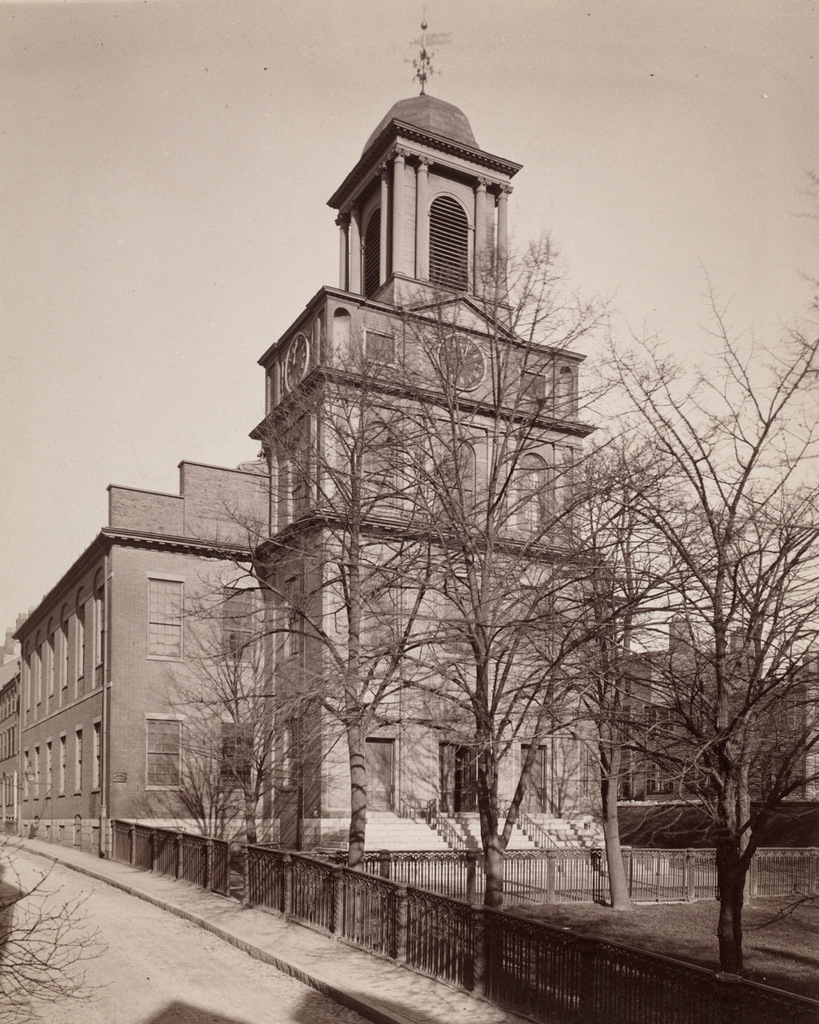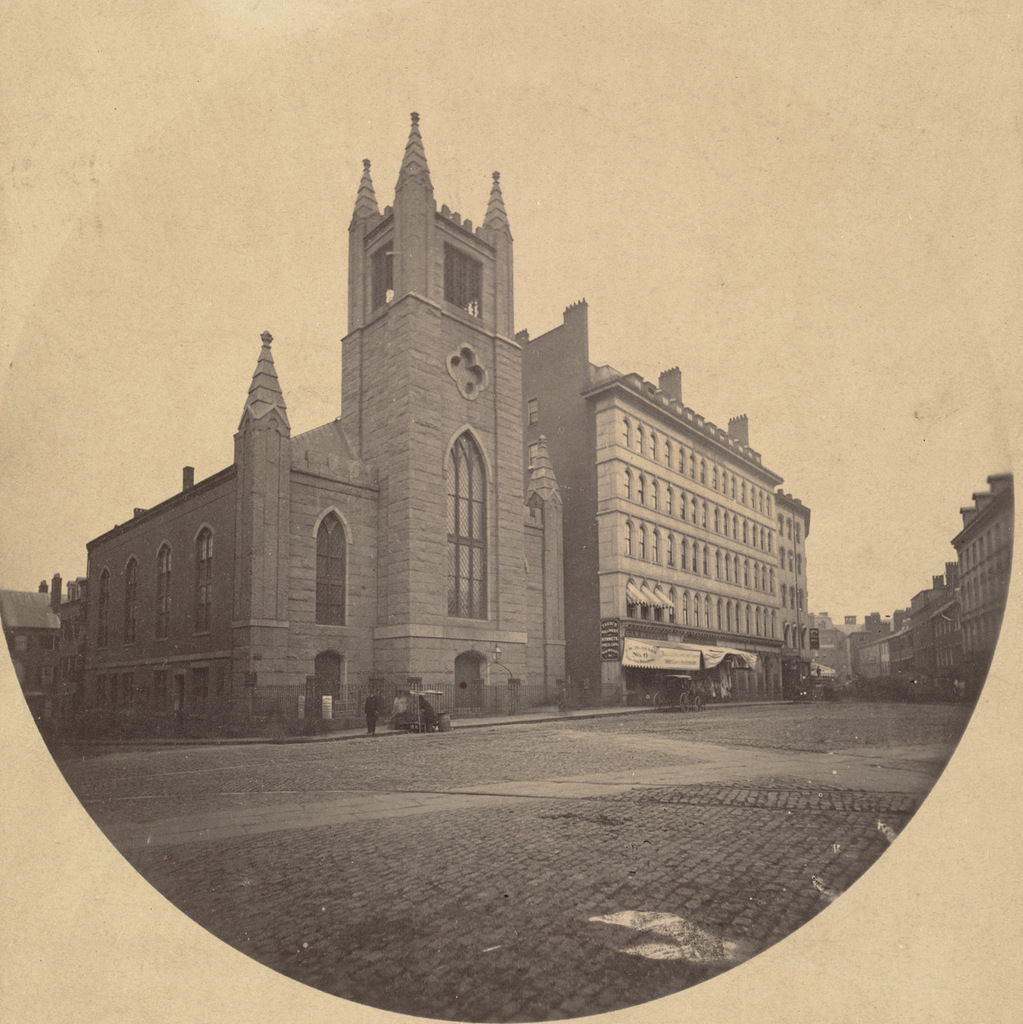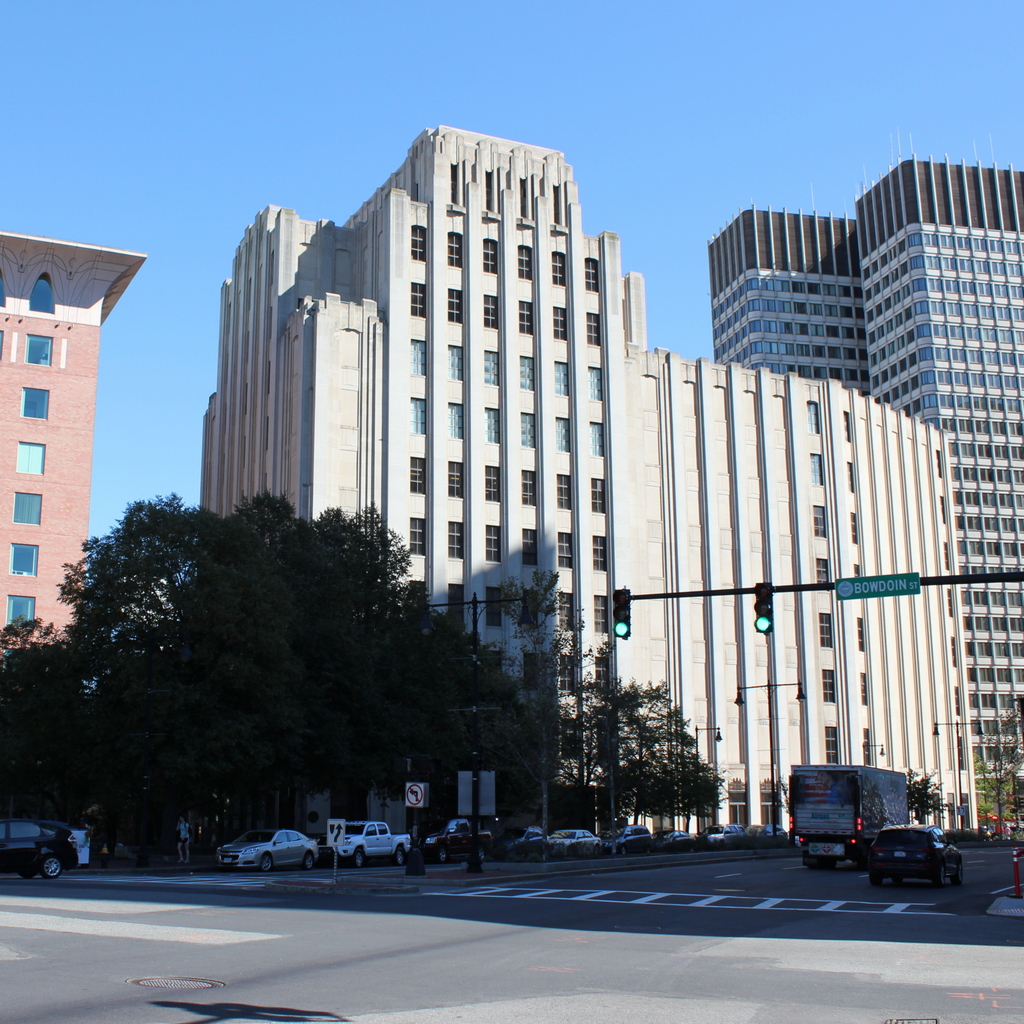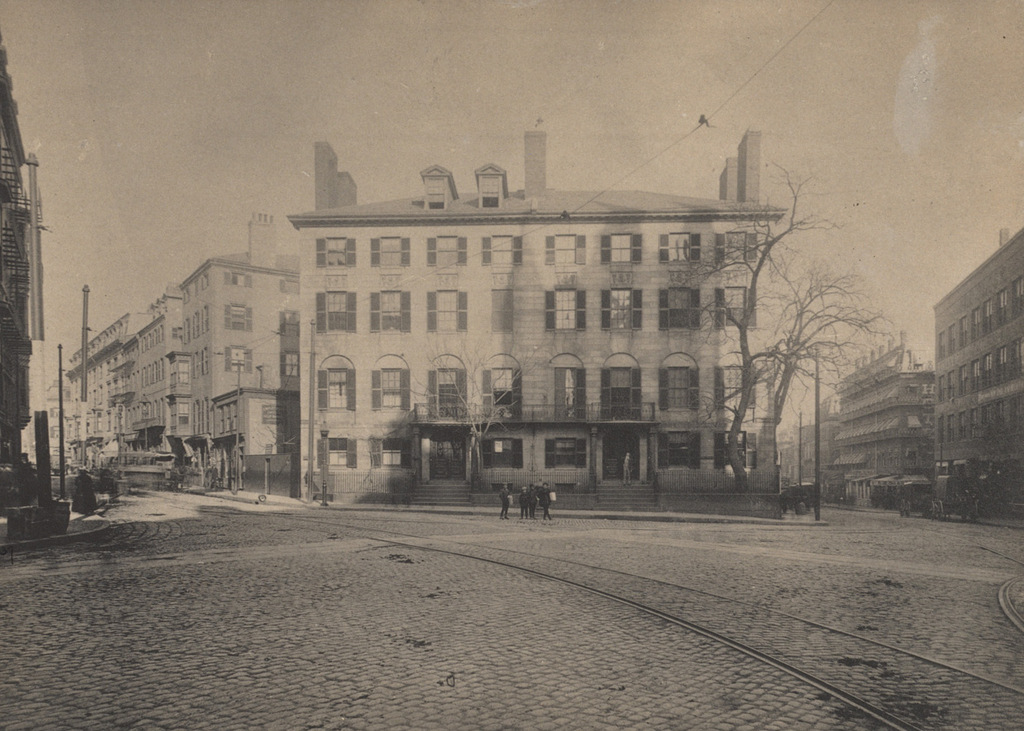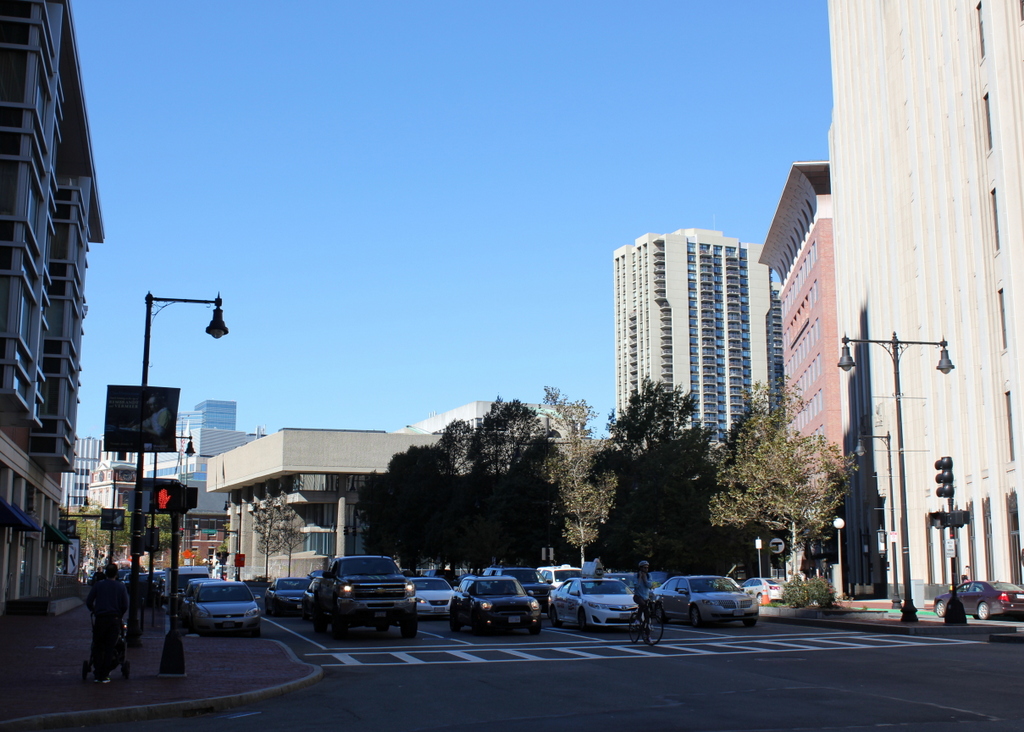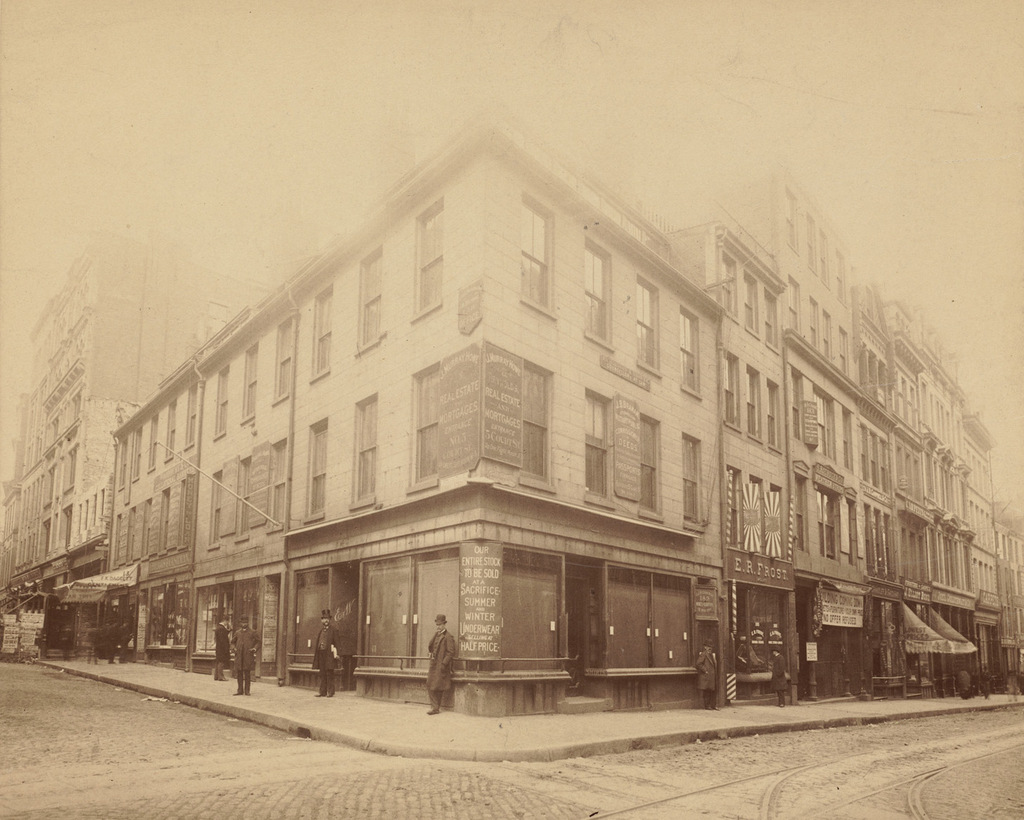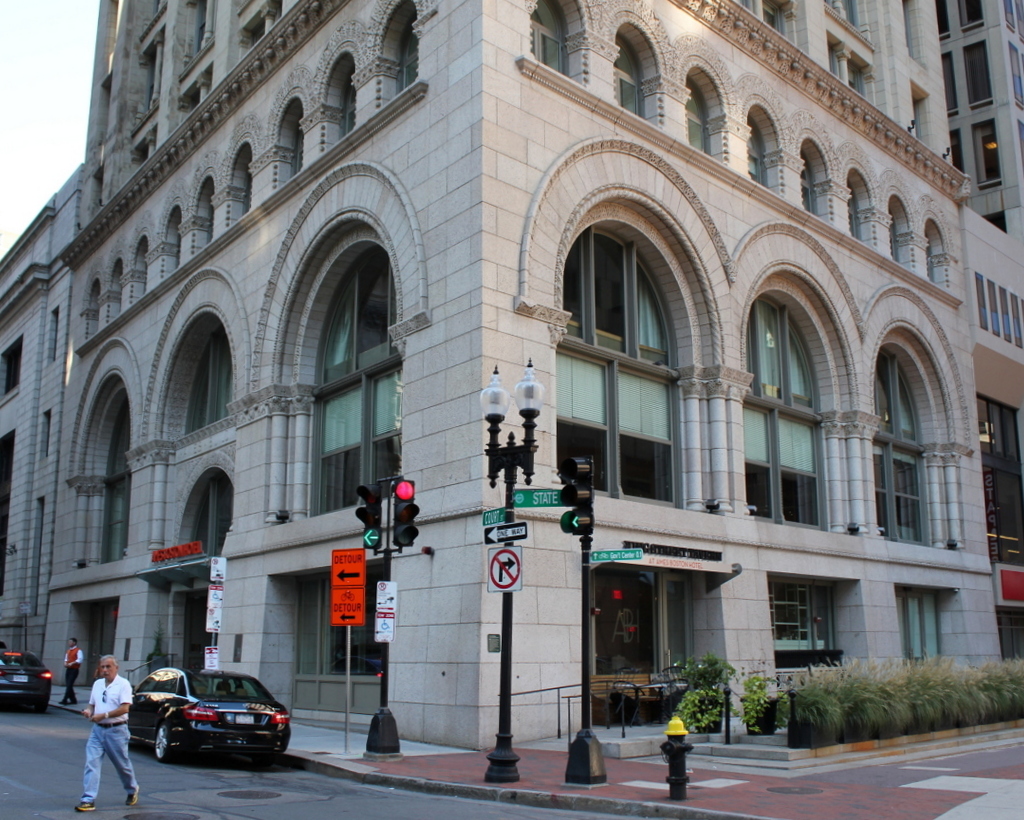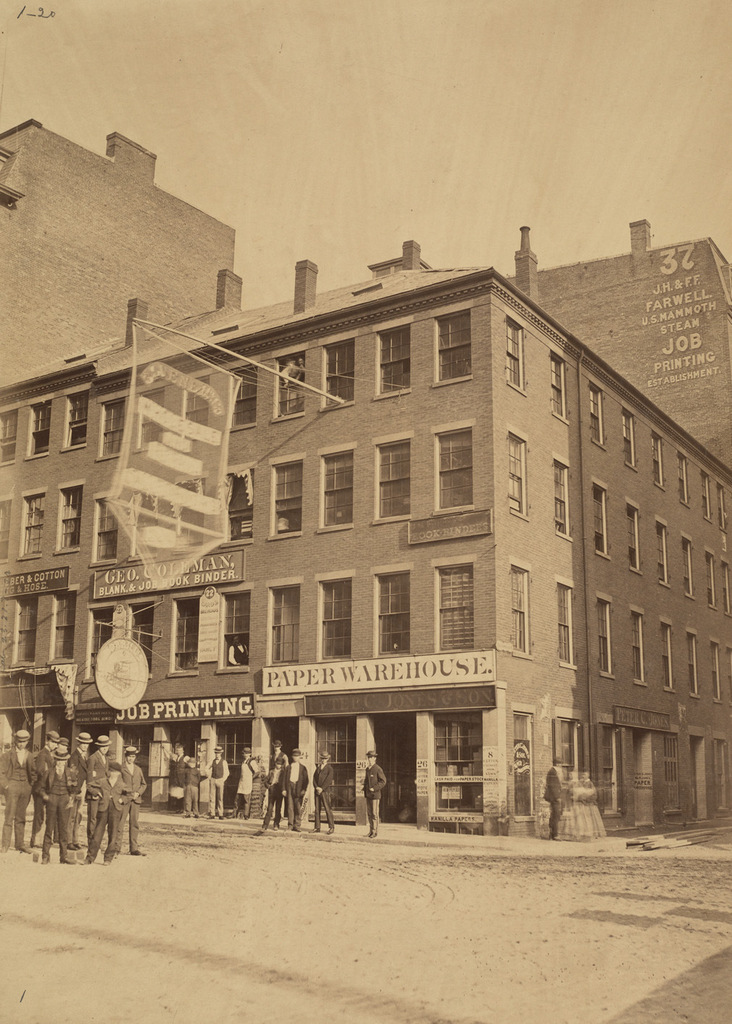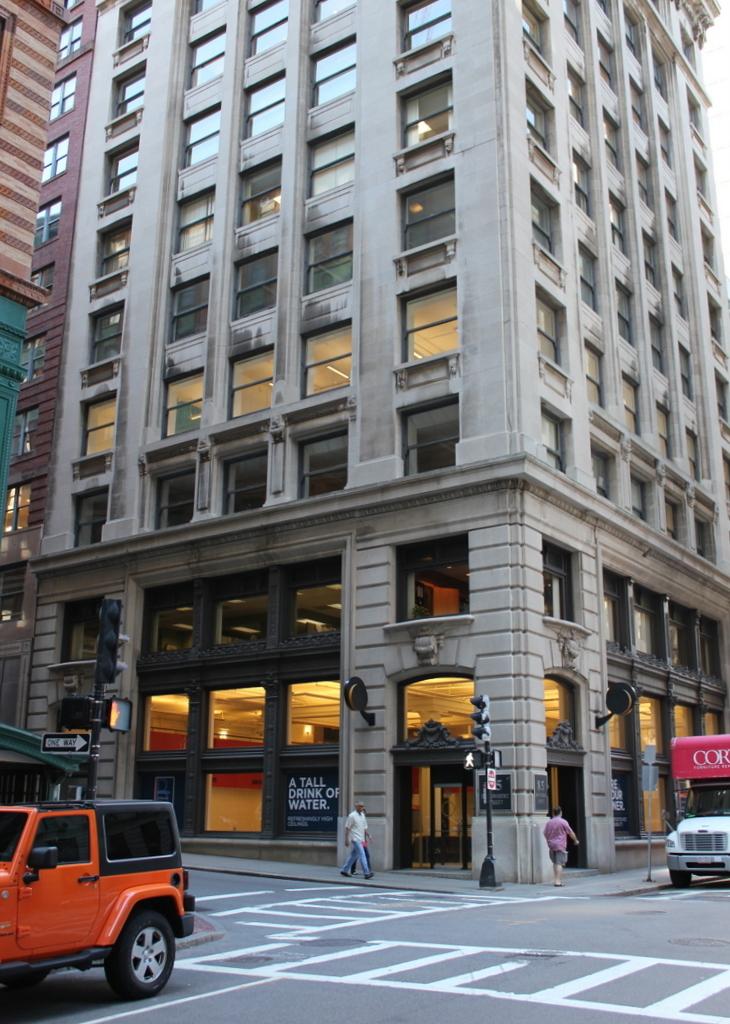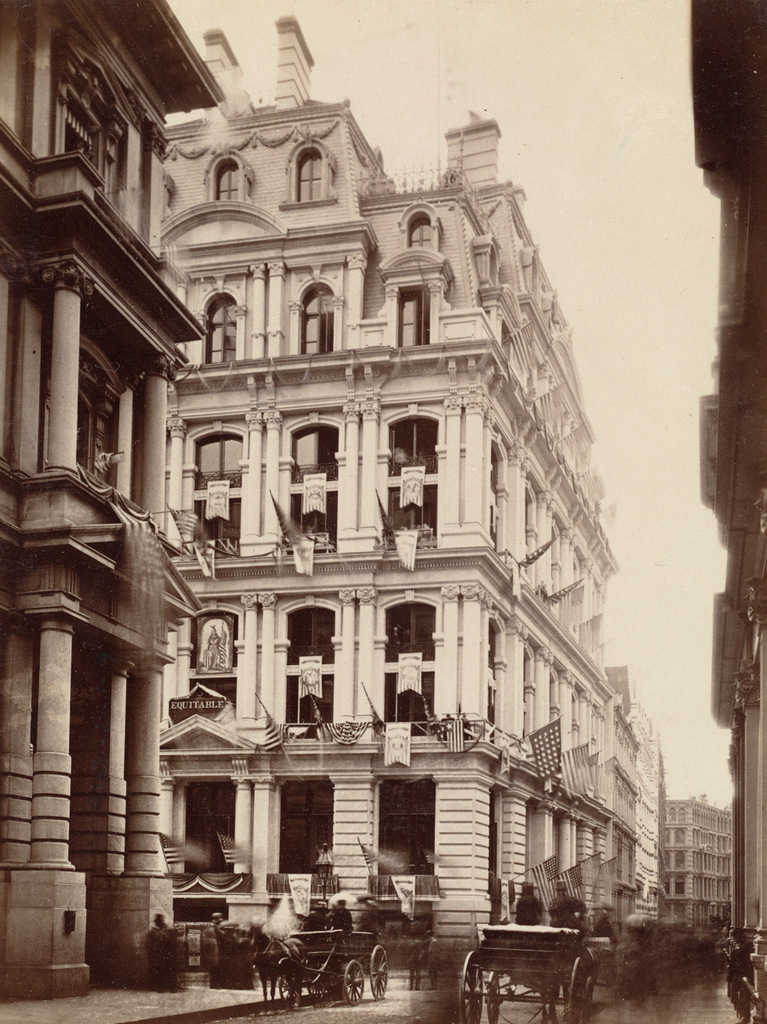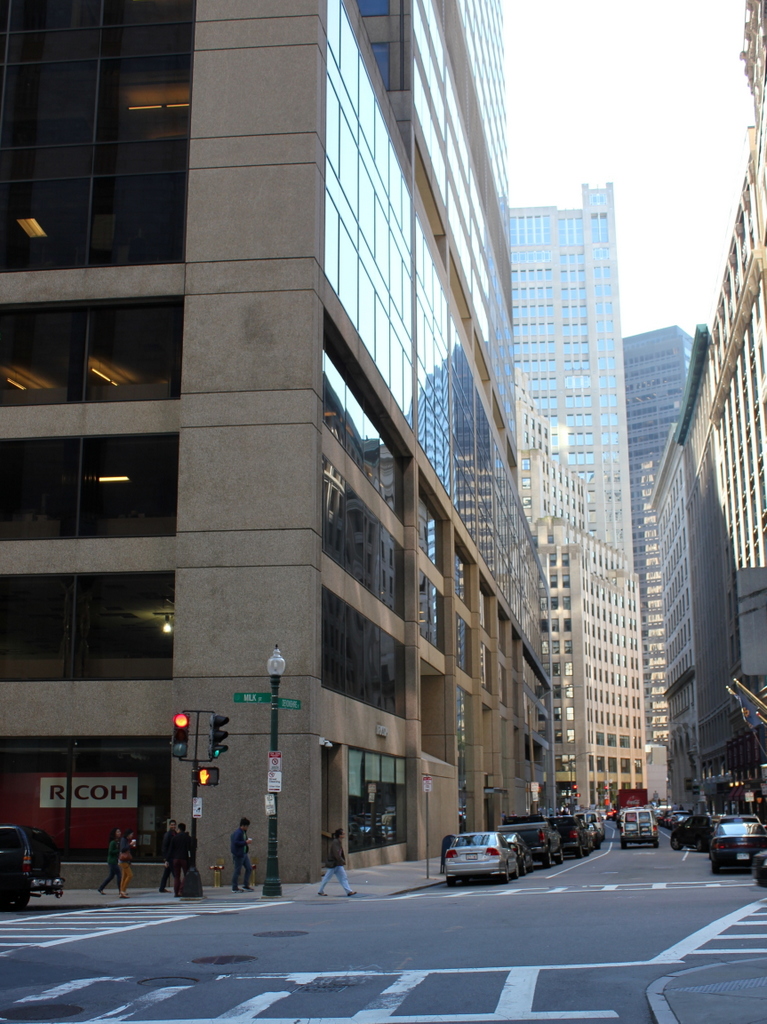The Old West Church on Cambridge Street in Boston, probably in the late 1800s or early 1900s. Image courtesy of the Boston Public Library.
The church in 2015:
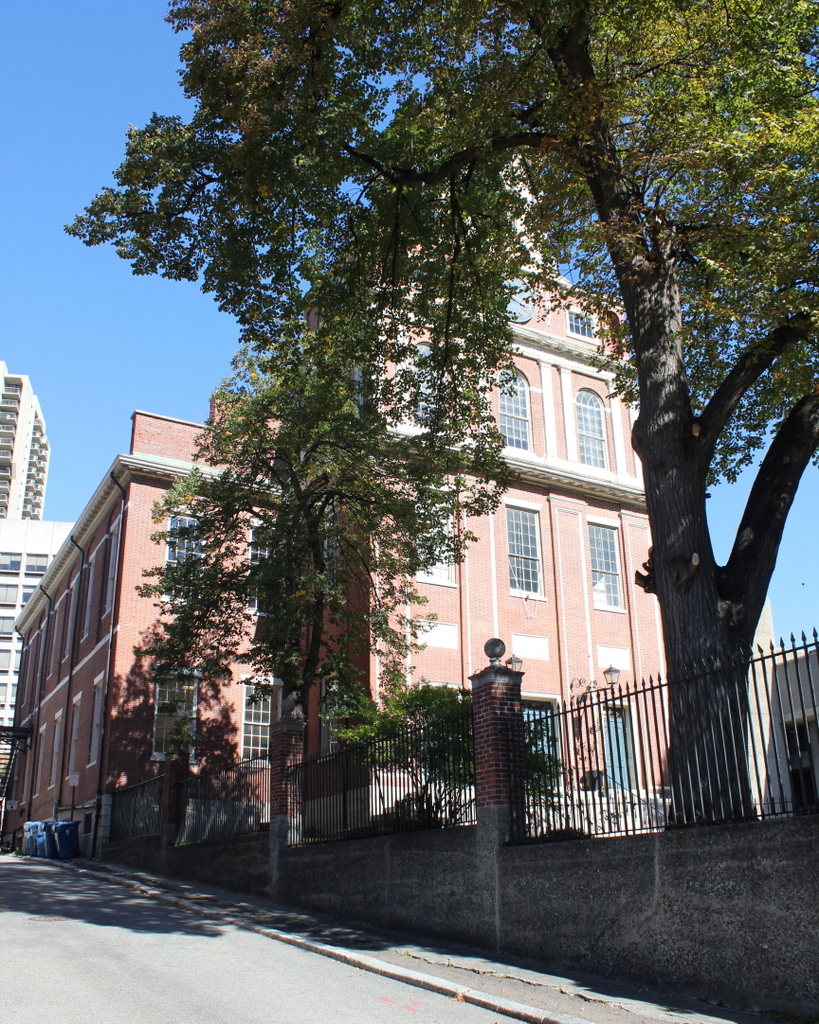
Old West Church was established in 1737, as one of Boston’s many Congregational churches. This particular building was built in 1806, and was designed by prominent early American architect Asher Benjamin. It is architecturally very similar to one of Benjamin’s earlier Boston churches, the Charles Street Meeting House, which is still standing on the opposite side of Beacon Hill from here. The church closed in 1892, but the historic building was saved from demolition and put to a new use as a branch library for the Boston Public Library. It was one of the few buildings to survive the urban renewal project of the 1950s that destroyed most of the West End, and after the library closed in 1960 it was purchased by the United Methodist Church. The interior was restored to its original appearance and reopened in 1964, and today it remains in use as a Methodist church.

